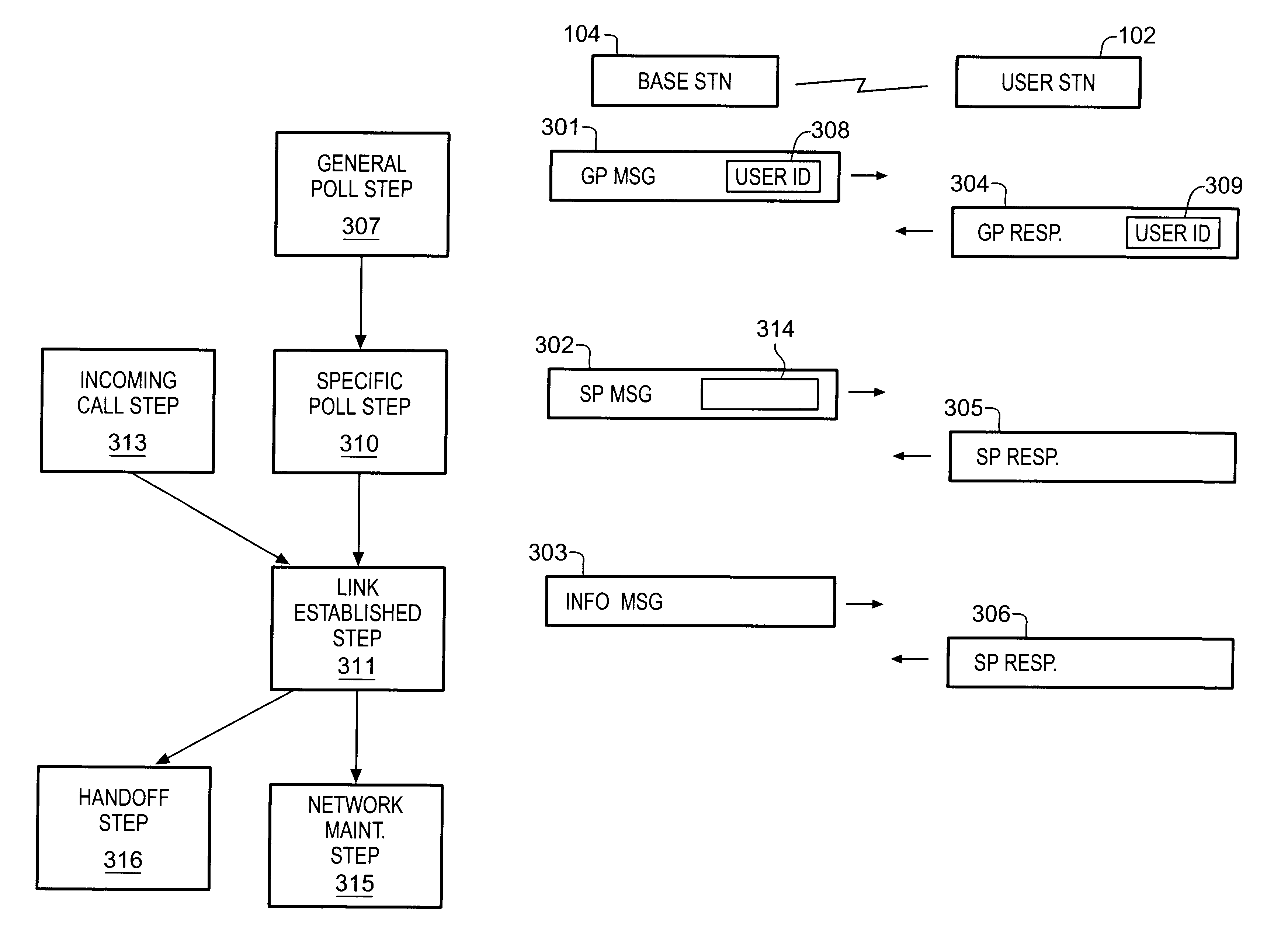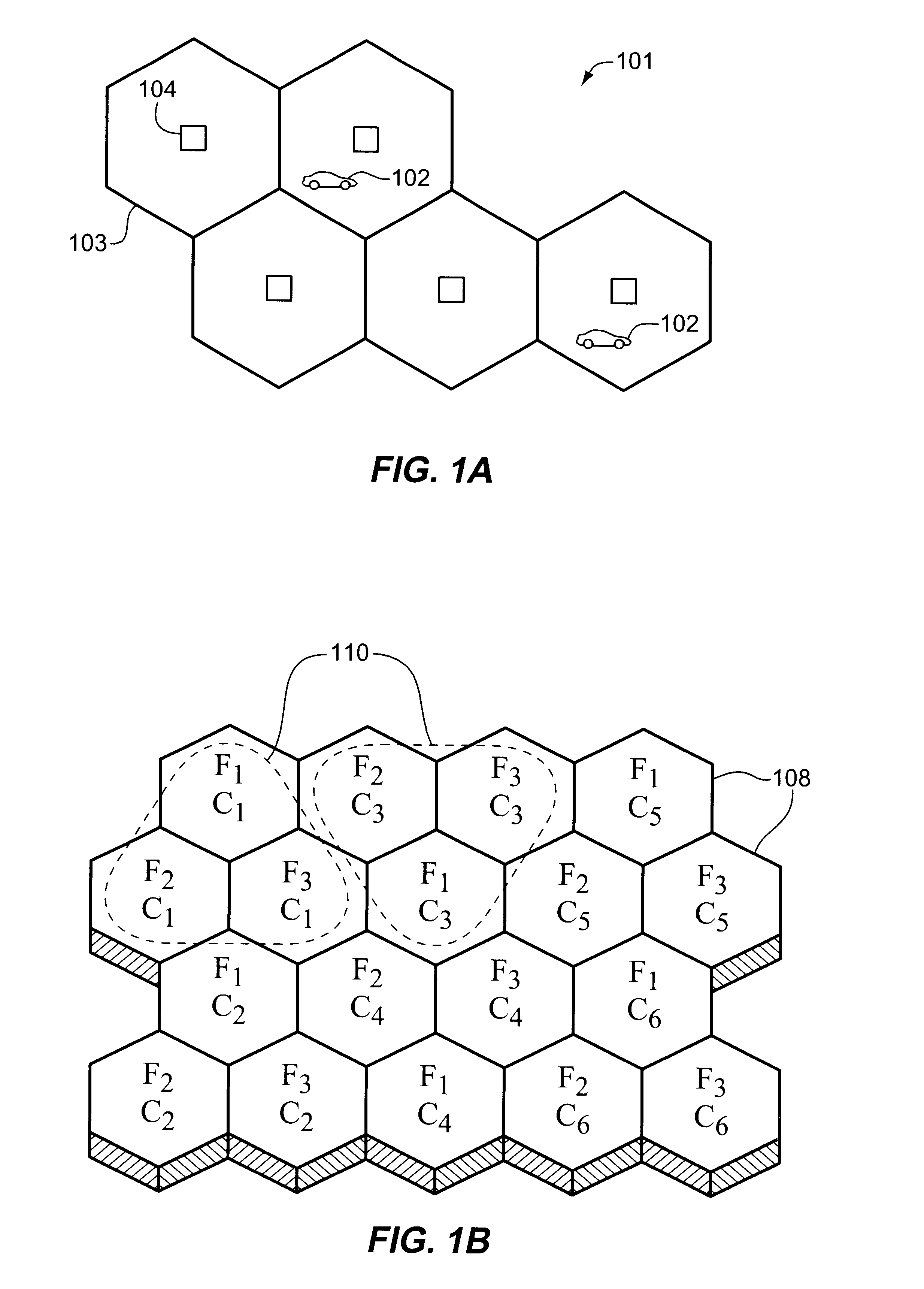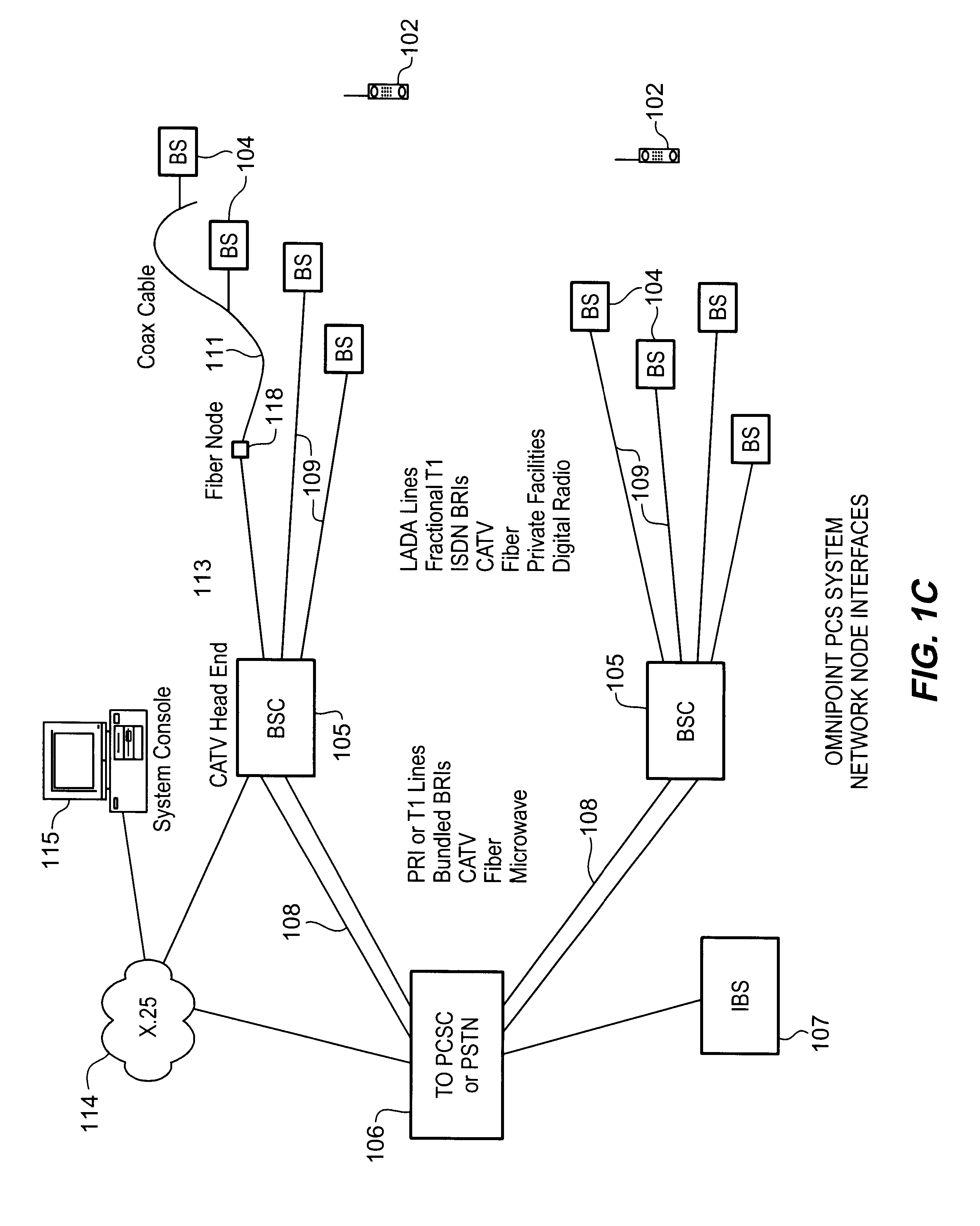PCS pocket phone/microcell communication over-air protocol
- Summary
- Abstract
- Description
- Claims
- Application Information
AI Technical Summary
Benefits of technology
Problems solved by technology
Method used
Image
Examples
Embodiment Construction
The disclosure of the invention may be supplemented ba the contents of technical information appended to this specification in a Technical Appendix A, a Technical Appendix B, and a Technical Appendix C, each of which is hereby incorporated by reference as if fully set forth herein. No admission is made as to possible prior art effect of any part of the appendix.
In a preferred embodiment, it is contemplated that communication between base stations and user stations will be conducted using a spread-spectrum technique. There are at leas three methods for establishing synchronization and communication, each preferably using an M-ary technique in which multiple bits of data are transmitted for each spread-spectrum symbol, e.g., by transmitting and receiving multiple different spreading codes, and interpreting the received one of those multiple different spreading codes at the receiver to indicate multiple data bits. Synchronization may be accomplished either by (1) automatic synchronizat...
PUM
 Login to View More
Login to View More Abstract
Description
Claims
Application Information
 Login to View More
Login to View More - R&D
- Intellectual Property
- Life Sciences
- Materials
- Tech Scout
- Unparalleled Data Quality
- Higher Quality Content
- 60% Fewer Hallucinations
Browse by: Latest US Patents, China's latest patents, Technical Efficacy Thesaurus, Application Domain, Technology Topic, Popular Technical Reports.
© 2025 PatSnap. All rights reserved.Legal|Privacy policy|Modern Slavery Act Transparency Statement|Sitemap|About US| Contact US: help@patsnap.com



